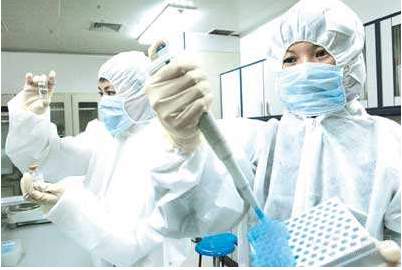
Over the past century, medicine and life sciences have made leaps and bounds. Humans have not only established medical techniques and methods such as anesthesia, safe blood transfusion, organ transplantation, and artificial heart valves, but also developed antibiotics, vaccines, and various medicines. Many diseases have been eliminated or controlled, and all these achievements are inseparable from the support of animal experiments.
1928 Many interventional experiments cannot be performed on humans, and experimental animals such as mice, rats, rabbits, pigs, and monkeys not only are highly homologous to humans in genetic composition, but also have organs and systems similar to humans. It performs its physiological functions in roughly the same way, and also suffers from various diseases similar to human diseases. Therefore, scientists can use animal experiments to simulate human physiological activities and the occurrence and development of diseases. Take the Nobel Prize in Physiology or Medicine as an example. As of this year, 183 of the 219 winners have work related to animal experiments. For example, the German scientist von Bellin introduced earlier in this public account established diphtheria antiserum and antiserum therapy based on the guinea pig experiment, and thus won the first Nobel Prize in Physiology or Medicine (guinea pig-star animal of early infection experiment).

Fleming discovered penicillin in 1928, but it was really used in antibacterial treatment until the 1940s, more than ten years later. Flory and Chain infected mice with lethal staphylococci, one group was given penicillin injection treatment, all mice survived, and the other group did not, all mice died, thus proving the antibacterial efficacy of penicillin . The discovery of penicillin and the verification of its efficacy have enabled humans to find a drug with a powerful bactericidal effect for the first time, ending the era when infectious diseases are almost incurable.
Vaccine development is also inseparable from animal experiments. Poliomyelitis, known as the ghost of the summer in the last century, has raged across the world and can cause paralysis, difficulty breathing and even death of infected persons. Today, this infectious disease has been eliminated in most countries, thanks to the vaccine development work of American scientists Salk and Sabin. Because polio only infects non-human primate laboratory animals, a large number of monkeys are used in vaccine development and early vaccine production. The non-human primate laboratory animal facility of the Kunming Institute of Biology of the Chinese Academy of Medical Sciences was established against this background, and has helped our country basically eliminate polio infections.
The disease prevention and control technology based on animal experiments not only benefits humans, but also animals. Diagnosis and treatment techniques such as anesthesia, blood transfusion, sedation, and surgery performed on animals are also established on the basis of animal experiments. The development of medicines and vaccines for pets and livestock also relies on animal experiments. By inoculating anthrax, rinderpest and swine flu vaccines, hundreds of millions of animal lives have been saved.
Although humans have made brilliant achievements in the prevention and control of diseases, we are still facing threats from infectious diseases such as HIV, Zika, and Ebola, and we have not conquered tumors. In the face of Alzheimer’s syndrome, we have not even No way. In vitro cultured cells cannot yet reflect the function and morphology of the tissues and organs from which they originated, and computers cannot simulate the functions of organs such as the heart or kidneys, so animal experiments are still essential. At the same time, it should be emphasized that the current research based on animal experiments will still benefit both humans and animals, and even the necessary and necessary means to protect endangered animals. Taking Ebola as an example, the mortality rate of human infection with Ebola is about 50%, the mortality rate of chimpanzees is 77%, and the mortality rate of gorillas is as high as 95%. From the 1990s to the present, Ebola has caused one third of the world's gorillas and chimpanzees to die. Obviously in the face of this kind of disease threatening to extinct a species, humans have the responsibility and obligation to develop effective prevention and control methods as soon as possible by carrying out scientific research based on animal experiments to prevent the close relatives of humans that are already in danger from disappearing from the earth.